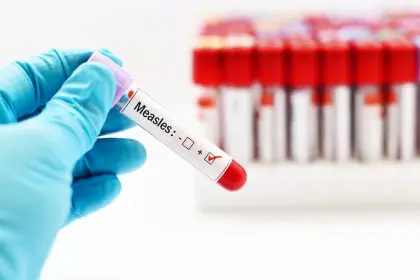The moment your child breaks out in hives after eating or complains that their throat feels funny can stop your heart as a parent. Food allergies have exploded in prevalence, with approximately 6 million children in the United States now affected by at least one food allergy. Even more alarming, this represents a staggering 70% increase since 1997. This isn’t just a statistical blip. It’s a trend that’s transforming how families navigate mealtimes, birthday parties, and school lunches across the country.
When a peanut becomes life-threatening
Food allergies aren’t just inconvenient dietary restrictions. They’re serious medical conditions that can turn a simple snack into an emergency room visit. What makes food allergies particularly frightening is their unpredictable nature. Your child might experience merely an itchy mouth one time, then face a life-threatening reaction the next.
Anaphylaxis represents the most severe form of allergic reaction, and it’s more common than many parents realize. Roughly 40 percent of children with food allergies have experienced anaphylaxis at some point. This sudden, potentially fatal reaction can cause dizziness, difficulty breathing, throat swelling, and a dangerous drop in blood pressure, all potentially within minutes of exposure to an allergen.
The speed at which anaphylaxis can progress makes it particularly dangerous. A child can go from seemingly fine to fighting for breath in minutes. This reality means parents must remain constantly vigilant, preparing for emergencies they hope will never happen while trying not to let fear dominate their family life.
What many don’t realize is that even tiny amounts of an allergen can trigger severe reactions in highly sensitive children. A knife used to spread peanut butter before cutting a supposedly “safe” sandwich can transfer enough protein to cause anaphylaxis in some children. This invisible threat makes food allergies particularly challenging to manage in everyday life.
The everyday challenges most people never see
Living with food allergies transforms ordinary activities into complex planning exercises. Birthday parties require advance calls to check ingredients. Restaurant meals involve detailed conversations with servers and chefs. Even grocery shopping becomes a time-consuming process of label reading and product verification.
School presents particularly difficult challenges. Cafeterias, class parties, and well-meaning teachers who might offer treats create numerous opportunities for accidental exposure. Many allergic children must sit at designated “allergy-free” tables, creating social separation that can be difficult for young children to understand.
The emotional toll on children often goes unrecognized. Constantly being the kid who can’t eat what everyone else is having creates feelings of isolation and difference. Some children face bullying or teasing about their allergies, while others develop anxiety around food and social situations involving eating.
Parents often experience their own emotional struggles, balancing the need for vigilance with the desire to let their children experience normal childhood activities. The constant background worry about potential exposures creates a unique stress that can be difficult for others to understand.
Taking control of your child’s food allergy
Despite these challenges, families can develop effective strategies to manage food allergies and help their children thrive. The journey starts with getting accurate information about exactly which foods trigger reactions in your child.
Working with a pediatrician and allergist is crucial for developing a comprehensive management plan. Allergists can conduct specific testing to identify your child’s triggers and assess their risk for severe reactions. They can also provide guidance on which situations require the most caution and which might allow more flexibility.
Learning to decipher food labels becomes an essential skill. Allergens can hide under different names or be included in surprising products. For instance, milk proteins might appear as casein or whey, while soy might be listed as lecithin. Mastering this specialized vocabulary helps parents navigate supermarket aisles more confidently.
Creating an emergency action plan represents perhaps the most critical step. This written document outlines exactly what symptoms to watch for and what steps to take if an allergic reaction occurs. It includes when to use medications like antihistamines and when to administer epinephrine auto-injectors like EpiPens. This plan should travel with your child and be shared with all caregivers.
Teaching your child age-appropriate self-management skills helps them gradually take control of their own safety. Even very young children can learn to ask “Is this safe for me?” before eating, while older children can be taught to read labels and administer their own emergency medications.
The school battleground
For many families, school presents the greatest food allergy management challenges. Children spend hours each day in an environment their parents don’t control, surrounded by potential allergens and well-meaning but sometimes uninformed adults.
Creating a formal 504 Plan or Individualized Health Plan provides legal protection and clear guidelines for how the school will handle your child’s allergy. These documents can specify everything from where your child sits during lunch to how staff are trained to recognize and respond to allergic reactions.
Building relationships with key school personnel makes a tremendous difference in your child’s safety. The school nurse, teachers, cafeteria staff, and administrators all play important roles. Personal conversations help these individuals understand the seriousness of your child’s condition and their role in keeping them safe.
Providing a clearly labeled emergency kit containing your child’s medications, action plan, and safe snacks ensures that appropriate treatment is always available. This kit should follow your child throughout the school day, including during field trips and special activities.
Some parents find it helpful to educate their child’s classmates about food allergies in age-appropriate ways. Understanding that certain foods can make their friend sick helps children accept classroom food restrictions and may reduce bullying or teasing.
When your child is newly diagnosed
Receiving a food allergy diagnosis for your child can feel overwhelming. The learning curve seems impossibly steep, and the responsibility immense. During this challenging time, remember that thousands of families have navigated this same journey successfully.
Start by focusing on the basics rather than trying to master everything at once. Learn about your child’s specific allergens, how to recognize reactions, and how to use emergency medications. These critical skills form the foundation for everything else.
Connect with support resources, including local and online food allergy communities. Other parents who have traveled this road can provide practical advice, emotional support, and recommendations for allergen-free products that have worked for their families.
Practice using epinephrine auto-injectors with trainer devices until the steps become automatic. In an emergency, you’ll need to act quickly and confidently, despite the stress and fear you’ll naturally feel. Regular practice helps build muscle memory that kicks in when you need it most.
Work on developing a positive attitude about food allergies despite the challenges. Children take cues from their parents about how to feel about their condition. When you approach allergies as a manageable part of life rather than a devastating limitation, your child is more likely to develop resilience and confidence.
The bottom line
Food allergies represent a serious and growing challenge for millions of families, but with proper management, allergic children can participate fully in life’s activities and experiences. Understanding the risks, creating clear emergency plans, and building a support network of knowledgeable caregivers creates a foundation for safety.
Remember that you’re not alone in this journey. Resources, support groups, and medical professionals specializing in food allergies can provide guidance tailored to your family’s specific needs. With education, preparation, and vigilance, your child can thrive despite their food allergies, developing the confidence and self-advocacy skills they’ll need for a lifetime of safe navigation in a food-centered world.















